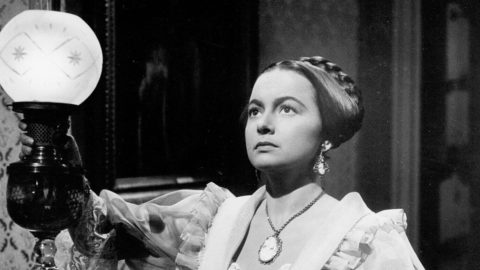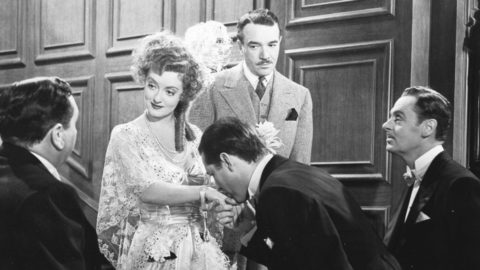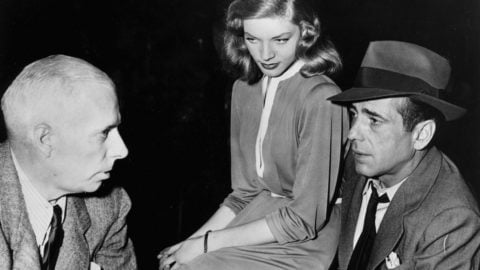TCM Diary: Miriam Hopkins!
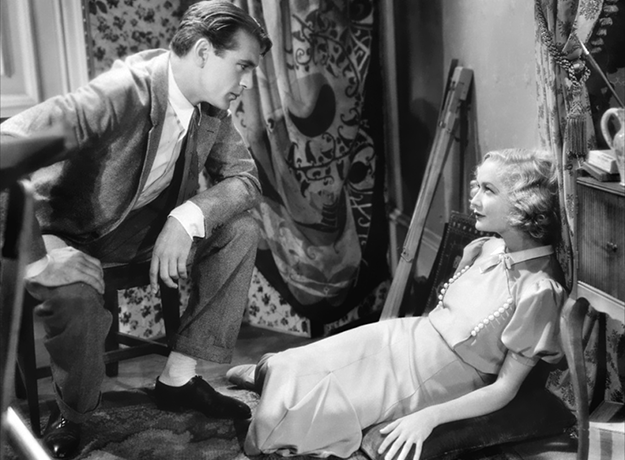
Design for Living
Christopher Reeve was once asked what it was like to “act with Katharine Hepburn” in the Broadway production of A Matter of Gravity. Reeve responded: “I did not act with Katharine Hepburn. I acted near Katharine Hepburn.” One can imagine that many of Miriam Hopkins’s co-stars felt the same way. The stories of her scene-stealing are legendary. Hopkins had done her time in the chorus in vaudeville and stock companies, and by the time she arrived in Hollywood, she would be damned if she was relegated to the chorus again.
Hopkins’s heyday was the 1930s, when her attention-getting mixture of insouciance and witty knowingness made her perfect for the free-for-all of pre-Code movies. Her run of films included Dr. Jekyll and Mr. Hyde, Trouble in Paradise, and Design for Living, in which Hopkins and her two pals (Fredric March and Gary Cooper) demolish civilization’s cherished mores in 91 minutes; Becky Sharp, for which she received an Academy Award nomination; and The Old Maid, opposite rival Bette Davis (whom she would rejoin in 1943’s Old Acquaintance). Famously, Hopkins was one of the early front-runners for the role of Scarlett O’Hara in Gone with the Wind, her name mentioned in a 1936 memo from producer David O. Selznick: “FOR THE LEAD MIGHT TRY SOMEONE LIKE HOPKINS OR BANKHEAD.” (Hopkins, who hailed from Savannah, Georgia, wanted that role badly; Vivien Leigh sashayed into the landscape and “stole” it right out from under Hopkins’ distinctive nose.)
In Wise Girl (1937) and Lady with Red Hair (1940) Hopkins is set loose, given free rein to dominate center stage. You could call them women’s pictures, although they lack the social critique and blazing martyrdom of the more famous titles in that genre. Stella Dallas they are not. Yet Miriam Hopkins is at the center of both, and given as much scenery as she would like to chew. She was an extroverted performer, expressive in her gestures and emotions, an actress who could easily command the center of the screen (or the periphery, if necessary). Her comedic timing was as sensitive as a tuning fork, and her ability to shed oceans of tears was equally impressive. In tantrum mode, she was explosive. Hopkins projected to the cheap seats. It’s a kind of acting that is out of style now: born from vaudeville and other stages, the broad presentational 19th-century pantomime style. It’s an approach that takes enormous skill and moxie, both of which Hopkins had in spades, and she added superior cinematic know-how (witness her exquisite work in close-up).
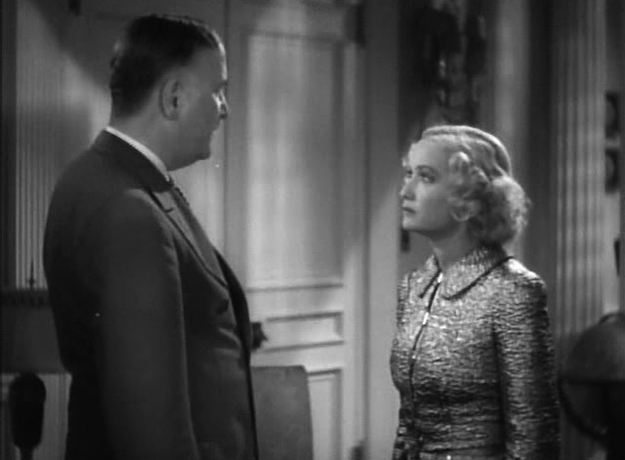
Wise Girl
In Wise Girl, directed by Leigh Jason, Hopkins plays heiress Susan Fletcher, who is first seen turning down three tuxedoed Slavs: “I’m sure you must be hot stuff in the Caucasus,” she says, gently closing the door in their disappointed faces. Once inside the family mansion, her father informs her that private detectives have discovered that her two nieces, orphaned through some unspecified catastrophe, are being raised by their uncle (Ray Milland) in Greenwich Village. Susan decides to go to the Village undercover to investigate the situation, driven by the conviction that the children must be raised in the wealth that was their dead mother’s birthright. Accustomed to luxury herself, Susan finds herself living in an apartment complex filled with bohemians, who spend their time painting/sculpting/juggling and racing in and out of one another’s apartments without knocking first. At first Susan is shocked (especially when people barge into her room while she is in the tub), but once she gets the hang of it she goes full native.
Wise Girl is all about the gap between the classes, observing how those on the “lower” rungs have much more fun than those on the higher. That particular fictional device has always been popular: Mark Twain used it, Shakespeare used it (who wants to spend time in a stuffy court when you can cavort in the Forest of Arden?), and 1930s films were filled with wacky heiresses having adventures out in the real world. In the middle of the Depression such stories must have been enormously cathartic. In Wise Girl, Susan’s life as an heiress is fun but empty; her boyfriends are rich, but they are drips. She has no outlet for her capabilities. Enter Greenwich Village, a class-less Utopia where all that matters is that you follow your bliss.
As Susan, Hopkins demonstrates her gift for comedy, and her willingness to look ridiculous. In one scene, she gets an acting gig in a department store, and she and another actor have to perform a wedding-night “sketch” filled with product-placement dialogue. Susan is stilted and stiff on stage, and part of the fun of the scene lies in watching Hopkins relish playing someone who cannot act (this will also be used to great effect in Lady with Red Hair). In another scene, she gets a gig providing Village-bohemian “color” at a snooty party, and is forced to don a loose-fitting dress patterned with huge patchwork-blocks (a look that would fit 1967 Haight-Ashbury better than a 1930s nightclub). She is mortified at first—Hopkins was brilliant at being mortified since she usually comported herself with such supernatural self-confidence—before discovering that the role frees her up in all kinds of unforeseen ways.
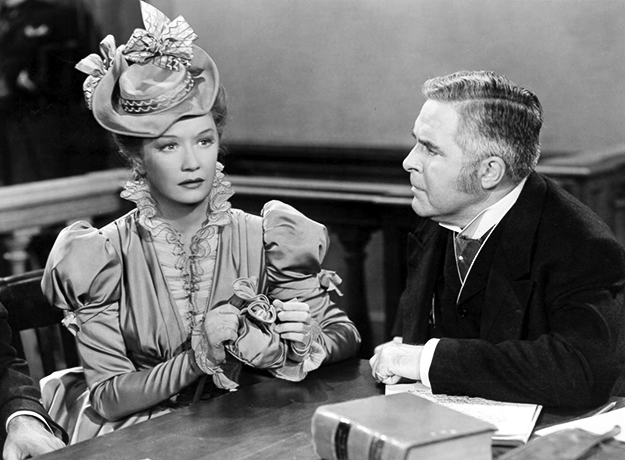
Lady with Red Hair
Hopkins shows a wide range in Wise Girl: wisecracking flirt, terrified fish out of water, an absurdly comedic figure put in all kinds of embarrassing situations, and finally, a soft-hearted woman open to the possibility of love with a man who actually sees her for her. Lady with Red Hair, a couple of years later, also allows Hopkins to show enormous range: the character she plays is humorless but the effect is often hilarious. Hopkins makes humorlessness funny, which is no easy task. The role in Lady with Red Hair is a great one and she knows it.
Directed by Curtis Bernhardt, Lady with Red Hair is based on the memoirs of one Mrs. Leslie Carter, a long-forgotten stage star of the 1890s. Trav S.D., author of No Applause, Just Throw Money: The Book That Made Vaudeville Famous, writes in his short essay about Mrs. Carter: “The vivacious redhead began acting on Broadway in 1890. Midway through the decade, she became a sensation in several popular David Belasco productions… Such was her fame that she was known during these years as ‘the American Sarah Bernhardt’ and ‘the first star of the 20th century.’” Hopkins plays “Caroline” Carter, while Claude Rains, with a mop of Beethoven-esque hair, plays David Belasco, the showman/Pygmalion who decides he can turn an untalented amateur into a stage star.
When Lady with Red Hair begins, Caroline—already a scandalous figure in Chicago for “rouging her lips in public”—becomes persona non grata after a terrible divorce through which she loses custody of her son. Determined to get her son back, she makes the only logical choice: she moves to New York to become a famous (and rich) actress, despite not having any acting experience. As in Wise Girl, Hopkins plays a character of one social rank who descends into a “lower” rank, and comedy ensues. Living in a boarding house filled with actors, she loftily explains to her astonished listeners: “I need to make lots of money quickly, so I’m going to start at the top.” She barges into David Belasco’s office, and demands that he create a vehicle for her, yesterday, if possible.
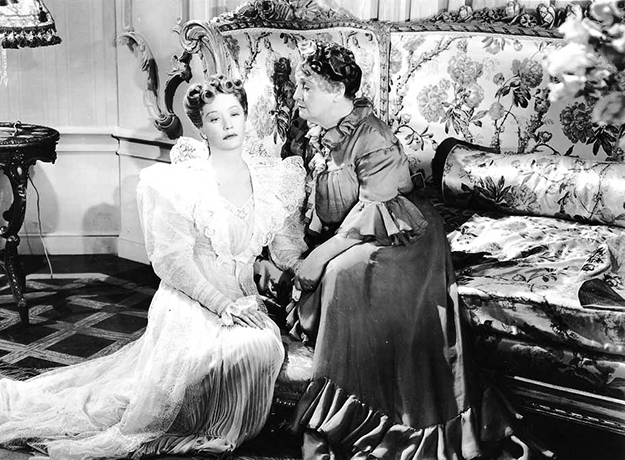
Lady with Red Hair
Caroline is naive to the point of delusion. Hopkins, who had spent her life in show business, knows as much, and milks that delusion for its comedic potential. Caroline tries to keep up with the insider banter of the actors at the boarding-house, but her face betrays blank incomprehension. Hopkins was best when she was playing intelligent women, and Caroline—delusions or no—is smart; it’s part of why the character is so strangely endearing. Belasco proceeds to give Caroline acting lessons, and he is an impatient task-master. Caroline’s horrible line-readings make him wince and cringe. The lessons and the subsequent play rehearsals are the most entertaining sequences in the film. Belasco bellows at her after she crosses the stage with the stiffness of an automaton: “Can’t you show blitheness?!” She snaps back, holding up the script: “Not with this stuff!”
Lady with Red Hair teeters between melodrama and slapstick, reflecting the transition period for Hollywood as a whole, as the war in Europe began to dominate headlines. Many stars who flourished in the 1930s could not make the transition. After two more films (in 1942 and ’43), Hopkins’s leading-lady status began to falter. She was also getting older, a perilous time in most any actress’s career. A practical woman, Hopkins returned to the stage, and found work in the new frontier of live television. She may have had a diva’s temperament, but at heart she was a chorus girl, and chorus girls, above all else, want to work. Her 1949 turn as Aunt Lavinia in William Wyler’s The Heiress came after a six-year hiatus.
And as Lavinia, Hopkins has one moment that ranks as one of her most eloquent gestures. Catherine (de Havilland) has been stood up by Morris (Clift), and paces in the parlor, crying out his name. Lavinia sweeps to the door to pull it closed, in a gigantic circular movement so filled with urgent sympathy that it is a visual echo of de Havilland’s anguished cries. The gesture is both theatrical and motivated, huge and also personal. Hopkins has her cake and eats it too: she tells the story of the moment, and she tells it in a way that would reach the cheap seats. Scene-stealer or no, that is how you play a moment.
Wise Girl and Lady with Red Hair air October 18, and The Heiress airs October 9 on Turner Classic Movies.
Sheila O’Malley is a regular film critic for Rogerebert.com and other outlets including The Criterion Collection. She wrote the narration (read by Angelina Jolie) for the Gena Rowlands tribute reel played at the 2016 Governors Awards. Her blog is The Sheila Variations.



